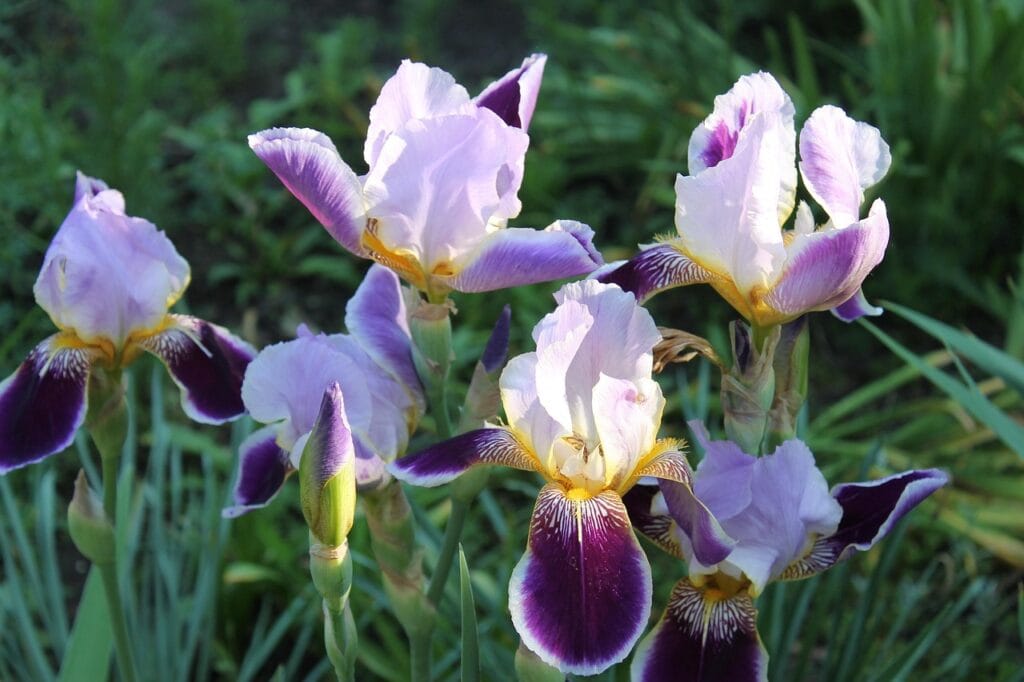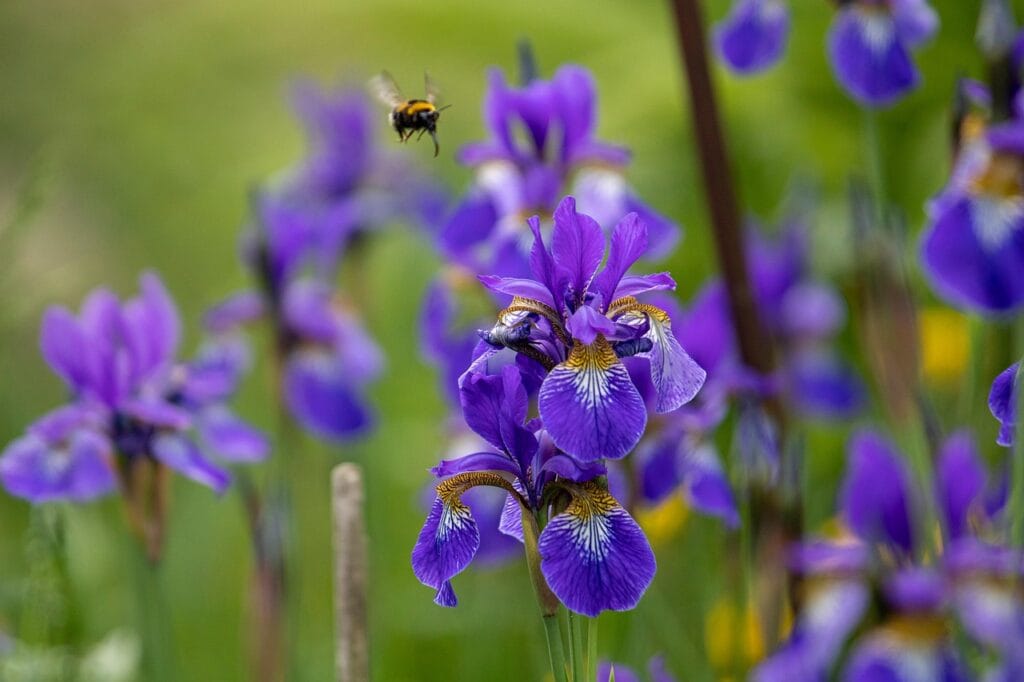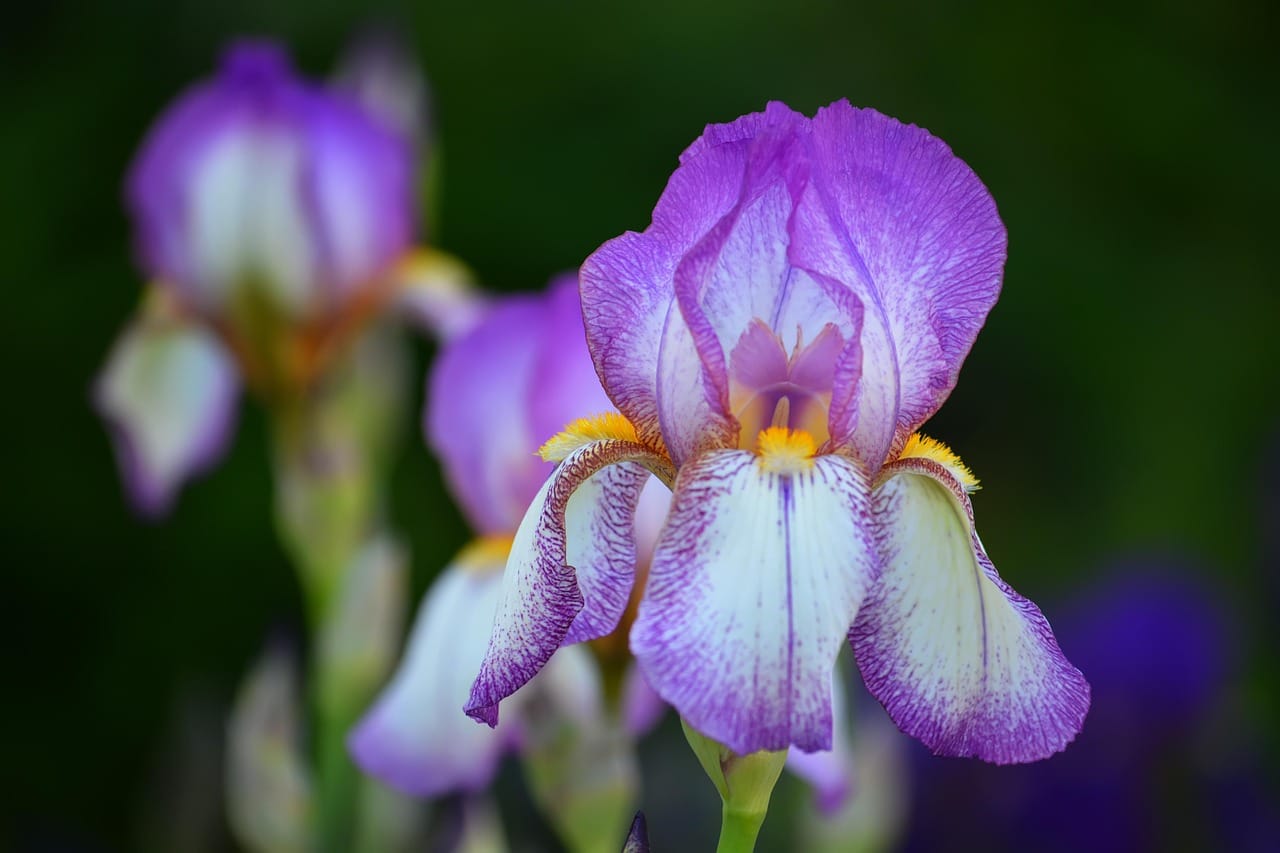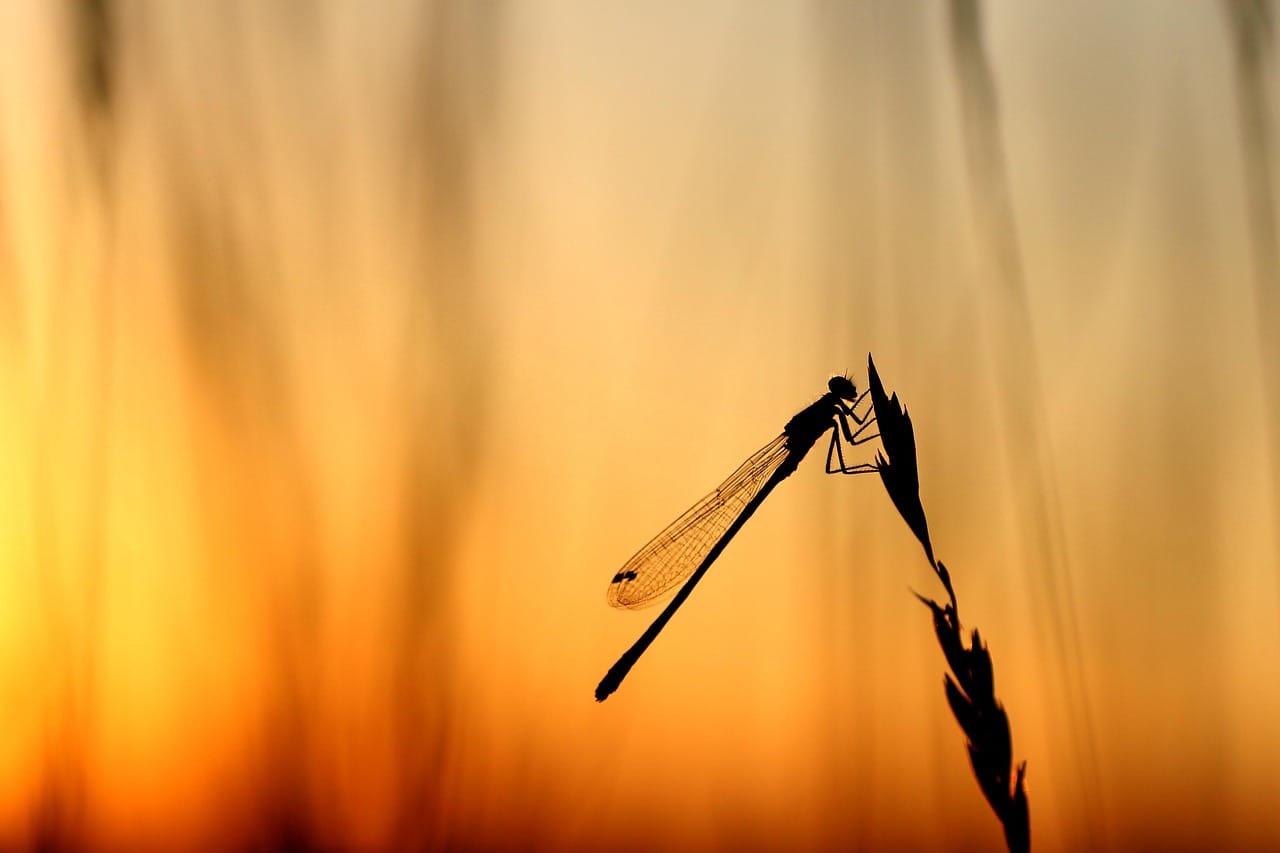So, you’re curious about the iris flower—great choice. This bold, elegant bloom packed with history, symbolism, and serious personality.
In this post, we’re gonna break down everything you need to know about the iris. We’ll start with where it comes from and what it actually means (yep, flowers have meanings), then walk through the different types—because there’s more than one.
You’ll also learn how to plant and care for iris flowers, what problems to watch out for, and pro tips for keeping them happy and blooming year after year.
By the end, you’ll know how to grow these striking flowers at home. Oh, and if you’ve ever struggled with plants that just won’t bloom, we’ll talk about that too.
Ready to dig in?
The Iris Flower: History, Meaning & Symbolism
Let’s start with a bit of backstory. The iris flower has been around for centuries—like, ancient-Greece-level old.
Its name comes from the Greek word Iris, which means “rainbow.” Fitting, right? These flowers come in almost every color you can think of, which is part of what makes them so popular in gardens.
Now here’s something cool: they named this flower after the Greek goddess Iris, who was said to be the messenger between heaven and earth. According to myth, she traveled on rainbows, delivering messages from the gods.
That’s where the rainbow connection comes in, and it’s a big reason the iris is often seen as a symbol of hope and connection.
Over time, the flower picked up more meanings. In France, it became the fleur-de-lis, a national symbol representing royalty and power. In Japan, irises are used during purification rituals in May. And in Victorian England? Giving someone an iris could mean “I have something important to tell you.”
Today, irises are often seen as symbols of wisdom, courage, admiration, and faith. That’s a lot for one flower, but hey, it’s earned it.
So yeah, this pretty bloom has layers. And understanding what it stands for kinda makes planting it even more meaningful, don’t you think?
You may also like:
- Gladiola Flower Guide: How to Grow and Care for Gladiolus in Your Garden
- Hummingbird Carpet Plant: Everything You Need to Know to Grow It
Types of Iris Flowers: A Colorful World of Varieties


Here’s where things get really interesting. You’ve seen an iris flower, but did you know there are over 300 species of them?
Luckily, you don’t need to learn them all. Most home gardeners focus on a few types that are easy to grow, look amazing, and come back every year.
Bearded Iris
This one’s the most popular in the U.S. You’ll recognize it by the fuzzy “beard” on each fall (the drooping petal). It’s super showy, blooms in spring, and loves sunny spots. The colors? Pretty much the entire rainbow—purples, whites, yellows, pinks, even near-black.
Beardless Iris
No fuzz here, but still beautiful. This group includes Siberian iris (Iris sibirica) and Japanese iris (Iris ensata). They’ve got more delicate flowers and slimmer leaves. Siberian types are great for colder climates and are low-maintenance. Japanese irises? They love moist soil and show off big, flat blooms.
Crested Iris
A small but mighty option, especially if you’ve got some shade. Instead of beards, these have little ridges or crests on their petals. They’re great for ground cover and woodland gardens.
Some irises bloom early in spring, others show up in summer. Some prefer dry soil, others want it wet. Point is, there’s an iris for every kind of gardener and every kind of yard.
Not sure which one to try first? If you want drama and easy care, go with a bearded iris. If you’ve got a wetter area or a pond nearby, Japanese irises are perfect. And if you want to naturalize a shady area, crested irises are your friend.
You may also like:
- Grow Milkweed in Pots or Gardens: A Complete Care Guide
- How to Protect Plants from Frost: 6 Proven Methods for a Healthy Garden
How to Grow Iris Flowers: Planting & Location Tips
Alright, let’s talk about getting these beauties in the ground. Growing the iris flower isn’t rocket science, but there are a few things you’ve got to get right if you want those bold blooms to show up and stick around.
When to Plant
The best time to plant iris rhizomes (that’s their thick root-like base) is late summer to early fall. This gives them time to establish roots before winter. If you’re in a warmer climate, you can stretch planting into early fall, but don’t push it too far.
Where to Plant
Irises love the sun. You’ll want to pick a spot that gets at least 6 hours of direct sunlight each day. If they’re too shaded, you’ll get lots of leaves and no flowers—super frustrating.
Soil & Drainage
Here’s a deal-breaker: soggy soil. Irises hate sitting in water. Make sure your soil drains well. If it doesn’t, mix in some compost or sand to lighten it up. Raised beds or sloped areas work great too. Bearded irises especially like a bit of a dry spell between waterings once established.
How to Plant
Lay the rhizome horizontally, just barely below the surface. You want the top peeking out. If you bury it deep like a tulip bulb, it’ll rot. Space them about 12 to 18 inches apart, because they spread out fast when happy.
Watering
Give them a good soak right after planting. After that, keep the soil lightly moist—not soggy—until they settle in. Once established, most types don’t need much water.
Plant them right, and they’ll reward you with blooms year after year.
You may also like:
- How to Grow Garden Sage at Home: Tips for Lush, Flavorful Plants
- 7 Plants That Attract Dragonflies and Keep Mosquitoes Away
Caring for Iris Flowers Year-Round


Once your iris flowers are in the ground, they don’t need much to thrive—but a little care at the right time can make a big difference. Think of this like low-effort, high-reward gardening.
Fertilizing
You don’t need anything fancy. Use a balanced, low-nitrogen fertilizer (like 10-10-10) in early spring, just as new growth starts to appear. Avoid overdoing it—especially with nitrogen—or you’ll end up with big leafy plants and no flowers.
Want to give them a boost after blooming? Go ahead and feed them lightly again. Just skip fertilizer during fall or winter. It’s unnecessary and can mess with their dormancy.
Deadheading & Pruning
After blooming, remove spent flowers to keep things tidy and to prevent seed pods from forming. Don’t cut the leaves right away, though. They help store energy for next year’s blooms.
Once the leaves start to yellow in late summer or early fall, that’s your cue. Trim them down to about 6 inches. This keeps the plant looking neat and helps prevent pests from settling in over winter.
Dividing Your Irises
Every 3 to 4 years, irises can get crowded. You’ll notice fewer blooms or rhizomes pushing out of the soil. That’s your sign it’s time to divide. Do this in late summer—dig them up, cut apart the healthy rhizomes, toss the old, mushy ones, and replant.
Winter Care
In colder regions, you can add a light mulch (like straw or pine needles) once the ground freezes, just to protect them from freeze-thaw cycles. In spring, pull that mulch away so they don’t rot.
Treat them right, and your irises will come back stronger each year—like clockwork.
You may also like:
Common Pests and Diseases That Affect Iris Flowers
Even tough plants like the iris flower can run into trouble sometimes. Most issues pop up when the soil stays too wet or the plants get too crowded.
The good news? If you catch problems early, they’re usually easy to handle.
Iris Borers (the worst offender)
These guys are tiny at first but turn into fat caterpillars that tunnel through leaves and into the rhizomes. The damage starts with streaked or chewed leaves, then turns into soft, rotting rhizomes. If you notice a mushy base and a nasty smell, it’s likely borers.
What to do: In early spring, check for leaf damage and squish any larvae you see. After blooming, remove and destroy dead foliage to get rid of eggs. If rhizomes are rotting, dig them up, cut out the mushy parts, and replant only the firm sections.
Fungal Leaf Spot
Brown or black spots on leaves? That’s probably fungal leaf spot, especially if it’s been rainy or humid. While not deadly, it makes the plant look sad.
What to do: Cut and discard affected leaves. Space plants out so air can flow between them. If it keeps coming back, you can use a fungicide, but most of the time, cleanup and spacing solve it.
Bacterial Soft Rot
This one stinks—literally. It’s a wet, smelly rot that starts in the rhizomes. Usually caused by too much moisture or iris borers making wounds in the plant.
What to do: Dig out infected parts immediately. Let healthy pieces dry for a day before replanting. Make sure the soil drains well, and don’t bury the rhizome too deep.
Other Pests
Aphids and slugs might show up, but they’re more of a nuisance than a real threat. A strong water spray or neem oil can handle them.
Bottom line: Good airflow, clean-up in fall, and well-drained soil go a long way in keeping your irises healthy.
You may also like:
Expert Tips for Thriving Iris Beds


Want your iris flowers to go from “nice” to jaw-dropping? The tips below will help you get the most out of your plants—not just this year, but every season.
Don’t Overcrowd
Irises love their space. Crammed beds mean less airflow, more pests, and fewer blooms. When in doubt, spread them out. Give each rhizome breathing room—12 to 18 inches is a solid rule.
Rotate or Refresh Soil
If your iris bed has been in the same spot for years and bloom performance starts dropping, it might be time to rotate out or refresh the soil. Over time, nutrients deplete and diseases can build up. Adding compost each year helps too.
Mulch… Carefully
Light mulch (like shredded bark or pine straw) is fine around—but not on top of—the rhizomes. Bearded irises especially don’t like being smothered. Keep the mulch pulled back so the tops stay dry and exposed.
Use Irises in Cut Flower Arrangements
Yes, you can absolutely bring irises indoors. Cut them early in the morning when the buds are just about to open. They look amazing in a vase and last around 4–7 days. Bonus: cutting some blooms encourages more to form!
Plan for Succession Blooming
Different iris types bloom at slightly different times. Combine early, mid, and late bloomers to stretch your color show over several weeks. Example: start with dwarf irises, then bearded, then Japanese. Easy win.
Pair With the Right Neighbors
Irises pair well with plants that don’t hog moisture—think daylilies, sedum, or ornamental grasses. Avoid water-loving plants that could make the soil too damp.
With a little planning and these small tweaks, your iris patch will be the one neighbors ask about.
You may also like:
Conclusion
The iris flower is a hardy, low-maintenance plant with deep roots in history, culture, and garden design. Are you drawn in by its symbolism? How about its rainbow of varieties? Or you just want something that looks incredible and comes back every year. Whatever the case, the iris is a smart choice for any home garden.
You now know how to choose the right type, get it planted the right way, keep it healthy, and make it thrive season after season. Follow these steps, keep an eye out for the usual problems, and your irises will reward you with stunning blooms that come back stronger each time.
Looking to expand your flower beds? Don’t miss our complete guide on how to grow and care for roses.
FAQ – Iris Flower Care and Growing Questions
1. When should I plant iris flowers?
Late summer to early fall is the best time. It gives the rhizomes a chance to establish roots before winter.
2. Do iris flowers need full sun?
Yes—most iris varieties need at least 6 hours of direct sunlight daily to bloom well.
3. How deep should I plant iris rhizomes?
Plant them just below the surface, with the top of the rhizome slightly exposed. Too deep, and they might rot.
4. How often do I need to divide irises?
About every 3 to 4 years. When they get overcrowded, you’ll notice fewer flowers or rhizomes popping out of the soil.
5. Why aren’t my irises blooming?
Common reasons include not enough sun, overcrowding, poor drainage, or planting the rhizomes too deep.
6. Are iris flowers deer-resistant?
Yes—most irises are deer-resistant, making them a solid choice for gardens in areas with wildlife.
7. Can irises grow in pots or containers?
They can, especially dwarf varieties. Just make sure the container drains well and gets plenty of sun.
8. Do irises come back every year?
Yep, irises are perennials. With the right care, they’ll return each year and often spread on their own.




